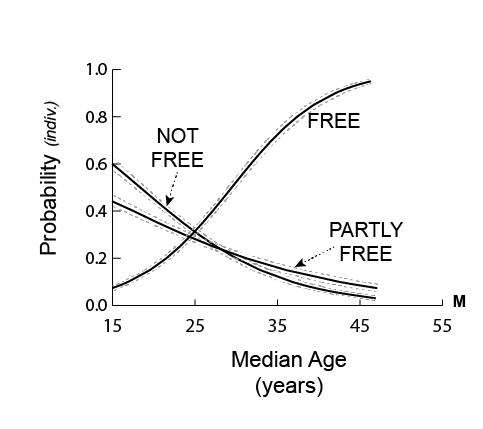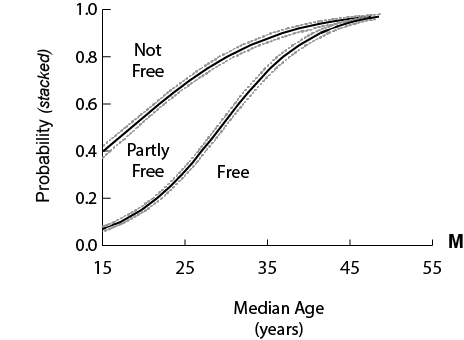Political Liberalization Transition (3 individual models: FREE, PARTLY FREE, NOT FREE)
Political Liberalization Transition (3 dichotomous categories, individual format). The outcome variables representing this transition are Freedom House’s three freedom status categories—Fre e, Partly Free, and Not Free—which are updated annually and published in its assessment of civil liberties and political rights (Freedom House 2018). Freedom status categories are calculated from the freedom score (7 to 1, where 1 is the highest level of freedom), which is the average of political rights (PL) scores and civil liberties (CL) scores (both ranging from 7 to 1, where 1 is the highest level). Freedom status categories are grouped from freedom scores and range as follows: Free from 1.0 to 2.5; Partly Free from 3.0 to 5.0; Not Free from 5.5 to 7.0.
e, Partly Free, and Not Free—which are updated annually and published in its assessment of civil liberties and political rights (Freedom House 2018). Freedom status categories are calculated from the freedom score (7 to 1, where 1 is the highest level of freedom), which is the average of political rights (PL) scores and civil liberties (CL) scores (both ranging from 7 to 1, where 1 is the highest level). Freedom status categories are grouped from freedom scores and range as follows: Free from 1.0 to 2.5; Partly Free from 3.0 to 5.0; Not Free from 5.5 to 7.0.
Figure 1. Individually formatted age-structural functions, displaying the functional forms of the three individually formatted age-structural models, in Table 1, that comprise the political liberalization transition.
Table 1. An example of a logistic regression table for three individually formatted age-structural models (Not Free, Partly Free, Free) that comprise the political liberalization transition.
Political Liberalization Transition (2 stacked models: FREE and PARTLY FREE+FREE)
Figure 1. Two stacked age-structural functions, displaying three regions associated with each of the categories in the political liberalization transition (Not Free, Partly Free, Free). These regions are bounded by the two stacked functions statistically described in Table 2 (below).
Table 2. An example of a logistic regression table for two stacked formatted age-structural models (Partly Free + Free, Free) that comprise the political liberalization transition.



